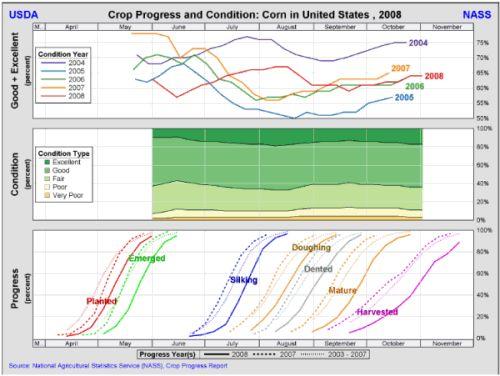USDA Alters Corn and Soybean Production Outlook, Disrupting Market Expectations
American farmers have signaled a noteworthy transformation in their planting intentions for the 2025 growing season. According to the USDA’s March Prospective Plantings report, producers across the United States plan to plant 95.3 million acres of corn, representing a substantial 5% increase compared to the previous year. This agricultural pivot occurs simultaneously with a retreat from soybean cultivation, as farmers intend to dedicate approximately 83.5 million acres to soybeans, marking a 4% reduction from the prior season.
The scale of this adjustment exceeded what many commodity analysts had forecast. Market watchers remain puzzled by certain aspects of these estimates. The shifting landscape reveals economic calculations happening at the farm level, where producers confront evolving profit margins and environmental considerations that defy straightforward analysis.
Regional Variations in Planting Decisions
Farmers throughout major agricultural zones have recalculated their strategies. The eastern and western regions of the Corn Belt will reduce soybean acreage by 0.7 million and 1.0 million acres respectively, redirecting that land toward corn production. This agricultural reshuffling extends across virtually all principal soybean-producing territories, with reductions anticipated throughout these regions.
Sorghum plantings tell a different story. Texas farmers intend to boost sorghum acreage by 12% compared to last year, while Colorado producers plan a 6% expansion. Meanwhile Nebraska sorghum acreage will contract slightly. These variations highlight the complex interplay of local conditions, water availability, and market signals influencing farmer decisions.
Supply and Demand Dynamics
The latest USDA projections indicate total soybean supplies for the 2025-26 marketing year could reach 4.905 billion bushels, which would establish a unprecedented volume despite decreased planting. This apparent contradiction stems from expected higher yields combined with adjustments to beginning stocks.
For the current marketing year, USDA has already made significant revisions. Soybean import projections increased while crush estimates were raised simultaneously, resulting in tightened ending stocks now projected at 375 million bushels. The balance between supply contraction and robust demand shapes the market outlook.
The department forecasts soybean usage will nearly match consumption levels experienced in 2021, potentially establishing a fresh benchmark. Domestic crush is anticipated to climb by 65 million bushels, primarily driven through biofuel demand for soybean oil. This industrial consumption represents a bright spot amidst otherwise challenging market conditions.
Price Projections and Financial Implications
Despite the projected decrease in ending stocks to 435 million bushels (35 million below the current year’s level), USDA economists anticipate continued price softening. The season-average price for soybeans is forecast at approximately $9.95-$10.00 per bushel for the 2025-26 marketing period. This valuation would extend the downward trajectory from the price pinnacle of 2022.
The pricing outlook presents farmers with hard decisions. When considered alongside the estimated $4.20 decline from 2022’s peak prices, producers face difficult economic realities that explain their flight toward corn. The mathematical calculations underlying these planting intentions reflect sophisticated assessments of input costs, yield potential, and market positioning.
Global Context Affects Domestic Planning
International developments cast long shadows over U.S. farmer calculations. China’s soybean appetite remains the central component of export projections, yet Brazilian competition has impeded American export opportunities in recent years. This international competitive landscape influences domestic planting strategies in ways that may seem counterintuitive without understanding the global dimension.
Palm oil production forecasts across Malaysia, Indonesia, and Thailand have decreased, potentially creating opportunities for alternative oil sources including soybean oil. These interconnected markets demonstrate the complex web of factors influencing commodity valuations.
The shifting balance of global oilseed trade has introduced additional variables into planting equations. Producers must navigate these waters with limited visibility into future market developments. Their collective decisions, reflected in the USDA’s planting intentions report, represent their best assessment of uncertain future conditions.
Farmers maintain flexibility in their final planting decisions until equipment actually enters fields. Weather developments during the critical planting window could yet modify these intentions significantly. The agricultural landscape continues evolving as producers respond to market signals and environmental realities that shape American farming’s path forward.









